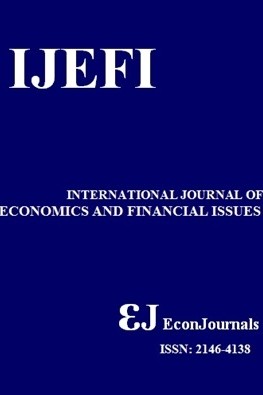An Application of Asymmetric Toda-Yamamoto Causality on Exchange Rate-Inflation Differentials in Emerging Economies
An Application of Asymmetric Toda-Yamamoto Causality on Exchange Rate-Inflation Differentials in Emerging Economies
- Başlangıç: 2011
- Yayıncı: İlhan ÖZTÜRK
Board Characteristics and Managerial Overconfidence in an Emerging Market
Shokrollah KHAJAVİ, Golamreza DEHGHANİ
Omar Durrah, Abdul Aziz Abdul Rahman, Syed Ahsan Jamil, Nour Aldeen Ghafeer
Does Bank Efficiency Matter? A Case of Egypt
An Empirical Research on Fragile Eight Countries
Mustafa Mete, Mehmet Akif Destek
Muhammad ZAHİD, Zulkipli GHAZALİ, Haseeb Ur RAHMAN
Lyubov AGARKOVA, Tatyana GURNOVİCH, Valentin FİLONİCH, Sergei SHMATKO, İrina PODKOLZİNAA
Foreign Investment Promotion Analysis in Sultanate of Oman: The Case of Dhofar Governorate
The Analysis of Foreign Trade Activities of Russia and Asia-Pacific Region
Natalia Victorovna Kuznetsova, Ekaterina Victorovna Kocheva, Nikolay Anatolievich Matev
Asymmetric Flow-Performance Relationship: Case of Chinese Equity Funds
Zia-ur-Rehman Rao, Muhammad Zubair Tauni, Ajid Ur REHMAN
